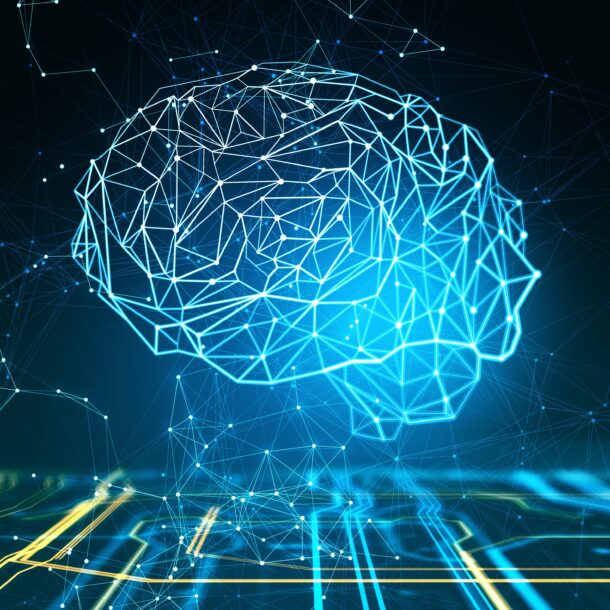
We experience countless emotions every day, some of which we can name while others stay namelessly rooted deep inside us. It wouldn’t be wrong to say that the feelings we experience throughout our lives are what give meaning to existence. Had there been no such thing as love and compassion, would the world be a place worth residing in? I wouldn’t think so. After all, the pure and undying emotion of love is what saves the day at the end of every blockbuster young adult movie! As a matter of fact, these sentiments; the ability to feel is exactly what makes us human in the first place.
However, like all other things in life, emotions too aren’t all rainbows and sunshine, but what truly matters is how we channel them, especially the negative ones. Now the question that arises is, what actually are negative emotions? By definition, negative emotions are ones that make us feel sorrowful and downcast e.g., hate, anger, fear, and disgust, etc. Despite its being normalized to feel such emotions, at times they can be quite difficult to deal with in the rush of a moment. To illustrate the concept further, it is probably more difficult to contain your anger in the presence of a trigger than it is to contain your happiness when you finally get that A you’ve been working so hard for. You’d likely want to feel that sense of joy and achievement again, but not the same can be said for that episode of exasperation or sadness you previously went through.
Why is this the case, you ask? The answer to this question lays in the complex physiological activity that takes place inside your body which outwardly presents itself in the form of negative emotion. Allow me to break it down for you!
The Role of Biology in Presentation of Negative Emotions
In order to understand the complexities of emotions, we must be able to comprehend their foreground and identify their presence. Different emotions help us respond appropriately to our environment and like all other positive emotions, negative emotions too occur from the limbic system consisting of the hypothalamus, amygdala, thalamus, and hippocampus, etc. This is also the system responsible for informing you regarding the nature of any emotion, whether it is pleasant or unpleasant.
Although, when it comes to experiencing and externally presenting any sort of emotions, all three main systems of the brain (autonomic, reticular, and limbic) collaborate to work together. Emotions aren’t only psychologically complex but also demand undivided attention biologically. I know just what you’re thinking, the human mind is indeed phenomenal! And if all of this wasn’t already enough to astound you, let’s take a look at particular areas of the limbic system and their respective functions.
Amygdala
The almond-shaped part of the limbic system deals with processing emotions, more particularly and namely, fear (as well as non-fear-related emotions). It wouldn’t be wrong to credit this region of your brain for identifying a potential (or present) threat and giving birth to behavior that would be the most effective. If you have ever heard of the ‘fight or flight response, you would be delighted to know that amygdala is the mastermind behind it as well. If you aren’t familiar with the concept, fret not, we’re going to discuss it in detail later.
The amygdala additionally plays a role in creating and remembering your most precious memories as well. To put it simply, the amygdala being aroused by emotion leads up to memory storage. Do you vividly remember the time you got a promotion after working tirelessly? Or when your daughter took her very first steps? Yes, that’s the amygdala doing its magic at the backhand.
Hippocampus
While the amygdala partly plays a role in the retention of events and thoughts, a huge job of the hippocampus is to make sure you can not only memorize but also recall information well enough. At the same time, the ball of processing emotions falls in the court of this very region of the brain too.
You probably remember the entire ‘ABC’ song you were taught back in primary school as well as the multiplication table of two. If you do, it’s about time you appreciate your hippocampus! Why is that so? This is because it is responsible for aiding your learning processes.
Lastly, an interesting insight that we gained (thanks to the research conducted by Wang et al.,2010) is that patients suffering from PTSD (posttraumatic stress disorder) have compromised levels of neurogenesis and an overall decreased volume of the hippocampus. Research studies are still being carried out for the reason of reaching a definite cause behind this finding.
Hypothalamus
You have probably heard of the hypothalamus in context to ‘homeostasis’ (maintaining a standard body balance), but what you aren’t familiar with is its role in the expression of ordinary human emotions. This region of the brain often incorporates emotional behaviors in context to any present circumstance.
You would be surprised to know that parts of the hypothalamus are divided into terms of various emotion-laden behavior. Confused? Let us elaborate. Researchers and expert neurologists have identified that the center part of the hypothalamus is mainly associated with negative emotions such as disinclination (and other expressive emotions falling under the same category). Ironically, on the other hand, this portion of the hypothalamus also controls the action of showing joy and happiness through laughter. To be precise, your hypothalamus is what spawns the tendency inside your brain to laugh uncontrollably and freely.
Therefore, if you are someone who enjoys laughing out loud and being expressive about finding something amusing, you certainly owe your hypothalamus a pat on the back!
And if you’re wondering what the rest of this brain’s region does, it deals with other primary emotions, precisely the emotions of gratification and anger through exposure to a particular stimulus.
Thalamus
Last but not least, the thalamus is that friend in the group who keeps everyone else connected, it is the glue. It basically provides a sensory relay center (sends sensory and motor signals to the amygdala and other parts of the brain for further processing). It also constantly counters one’s level of alertness.
Negative Emotions and Physiological Activity Associated with Them
Fear
It wouldn’t be wrong to say that fear is the result of a neuro and physiological process, intending to prepare one to be ready for action. While it may not be a pleasant emotion, it certainly does its job well in preparing you to deal with the danger of any sort.
To put it simply, fear and acute stress trigger our ‘fight or flight response’ made possible by the release of hormones. Once the sympathetic nervous system is activated, it, in turn, invigorates adrenal glands. During this continuous process, adrenaline, and cortisol (also known as fear hormones) are released. Owing up to this reason, you may find yourself having an increased heart or breathing rate at a time of fear. Some other distinguishable features of physiological activity because of fear include trembling, dilated pupils, flushed skin and feeling hyperalert, etc.
Sadness
At several points in our lives, each of us have felt despair in different, but equally disheartening ways. Henceforth, it wouldn’t be wrong to say that we as humans are all too conscious of the seemingly endless cloud of sadness over our heads. But on a biological and psychological level, what is it that pushes you to feel this miserable sort of way? The happy chemicals do, isn’t it ironic? An imbalance of serotonin and dopamine (mainly) can lead to depression. Patients with depression are often prescribed anti-depressants to counter the balance of these neurotransmitters inside the brain.
In addition to this, along with several other reasons, natural hormonal fluctuations can also cause one to feel sad and hopeless at times.
Not-so-fun fact; females are twice as likely to suffer from depression because of hormonal changes.
Although there are not many physiological responses associated with sadness (as compared to frustration and fear), the ones psychological researches have made us aware of are as follows.
- Heart rate increases or decreases
- Skin conductance response increases
- Facial expressions (dropping eyelids, lip corners pulled downwards, etc.)
Anger
When you’re stuck in an argument with someone who just won’t stop yelling at you or is invalidating your reality and you feel like you might as well explode, your body is busy reacting the same way as well. Similar to the body’s response while dealing with the emotion of fear, when the adrenal gland is activated, it releases stress hormones (yet again, adrenal and cortisol) in your bloodstream. Then onwards, your brain takes up the task of directing blood to your muscles, to be right on dot for any sort of physical exertion you may have to take part in (violence is not the answer to every problem kids!)
The result of this internal physiological activity leads to responses like;
- Increased heart rate
- Increase in the rate of respiration
- Decrease in digestive process
- Sweating
- Dilated pupils
- Increase in body temperature.
Hormones Associated to Negative Emotions and Their Effects on Health
It is a matter of no astonishment that negative emotions not only mess with our psyche and make us feel unpleasant but have quite a lasting effect on our physical health as well. For the sake of our better understanding, let’s take up the example of a man who gives in to anger and ends up yelling at his coworkers or his wife whenever a minor inconvenience occurs. It is likely that he would have episodes of headache every other day in comparison to someone who can contain himself in a moment of anger.
In extension to this, release of various hormones in excessive during reoccurring physiological arousal can drastically influence one’s health as well. Having said that, let’s walk down the lane of what health risks there actually are associated to each hormone.
Adrenaline
Like any other thing in this world, an excess of hormones is bad too, and that includes adrenaline. The stress hormone can seriously damage your blood vessels and push you in the alley of other cardiac diseases i.e., high probability of a heart stroke. And on top of all that, adrenaline brings with it the gift of headaches (honestly, the amount of misery they can add in your day is underrated), insomnia in case of long-term stress or fear etc. Unfortunately, an excess of adrenaline release may also trigger anxiety.
Cortisol
Cortisol is often applauded for its positives (countering the process of metabolism etc.), but there’s always two sides to a story and the other side isn’t all that pretty. An abundance of cortisol can be considered a short way down to hyperglycemia along with body weakness due to decreasing bone density as well as muscle tissues. Other signs include decreased immunity and risk of type 2 diabetes. Lastly, research studies have shown a correlation between disrupted sleep and increased levels of cortisol in the body.
Dopamine
Most of us would be aware of the upsides of redundance of the happy chemical, but what are the downsides? Yes, it may lead to depression and suicidal thoughts etc., but unfortunately, there is a lot more to it. Muscle cramps, tremors, body aches and lethargy are only a few signs of dopamine deficiency. Over and above that, neuroscientists and psychologists are of the view that lack of dopamine may also be one of the contributing factors to Parkinson’s disease
Our body is a chemical factory; each second, we produce a different chemical with a change in our emotions, and our chemical soup changes; every individual has to decide what kind of soup they want to be. Research is clear that every emotion has a direct impact on our health system. It’s time we choose the ingredients consciously.
Sign up for emails on the latest news from our side.
We’ll email you when new articles are published. We’ll email you when new Programs are Organized.

